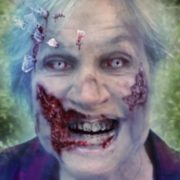SCRIPT OR STORYBOARD?
I am a seasoned commercial TV copywriter with thousands of scripts to my credit. I am also a fervent believer that a well written script is a crucial element necessary when creating TV commercials. However, the saying, “a picture is worth a thousand words,” is very true. No matter how well written a script may be, the storyboard serves as a much better blueprint for understanding visual content.
The layout of a commercial script typically appears as two columns. The audio dialogue or voiceover appears in one column and the visual descriptions, graphics and logos appear in the second column. A detailed script may also include music cues, sound effects, descriptions of animation, text graphics of salient features, prices, ordering information and director’s notes such as CU (close-up), MS (medium shot), WS (wide shot), Zoom In or Zoom Out. The timing of the script should adhere to the varying media buy lengths, such as 60, 30, 15 or 10 seconds.
However, as detailed as any commercial script may be, it is subject to individual interpretation. Since many persons find it impossible to "visualize", the written script is often subject to misinterpretation.
A good, detailed storyboard can avoid many issues that occur during the pre-production process. Graphic treatments, supers, logos, and animations are more easily understood. Colors come alive. The proposed wardrobe, props, sets, and talent can be illustrated and agreed upon prior to filming. A great storyboard will save time and money and help create a more cohesive team effort.
In conclusion, storyboards can help the marketing and creative teams agree on the direction of the creative approach and visual details. Surprises can be exciting but are very expensive when creating visual content.
Collette Liantonio
90 East Halsey Rd, Suite 105, Parsippany, NJ, 07054
conceptstv.com | jonc@conceptstv.com | 973-331-1500







